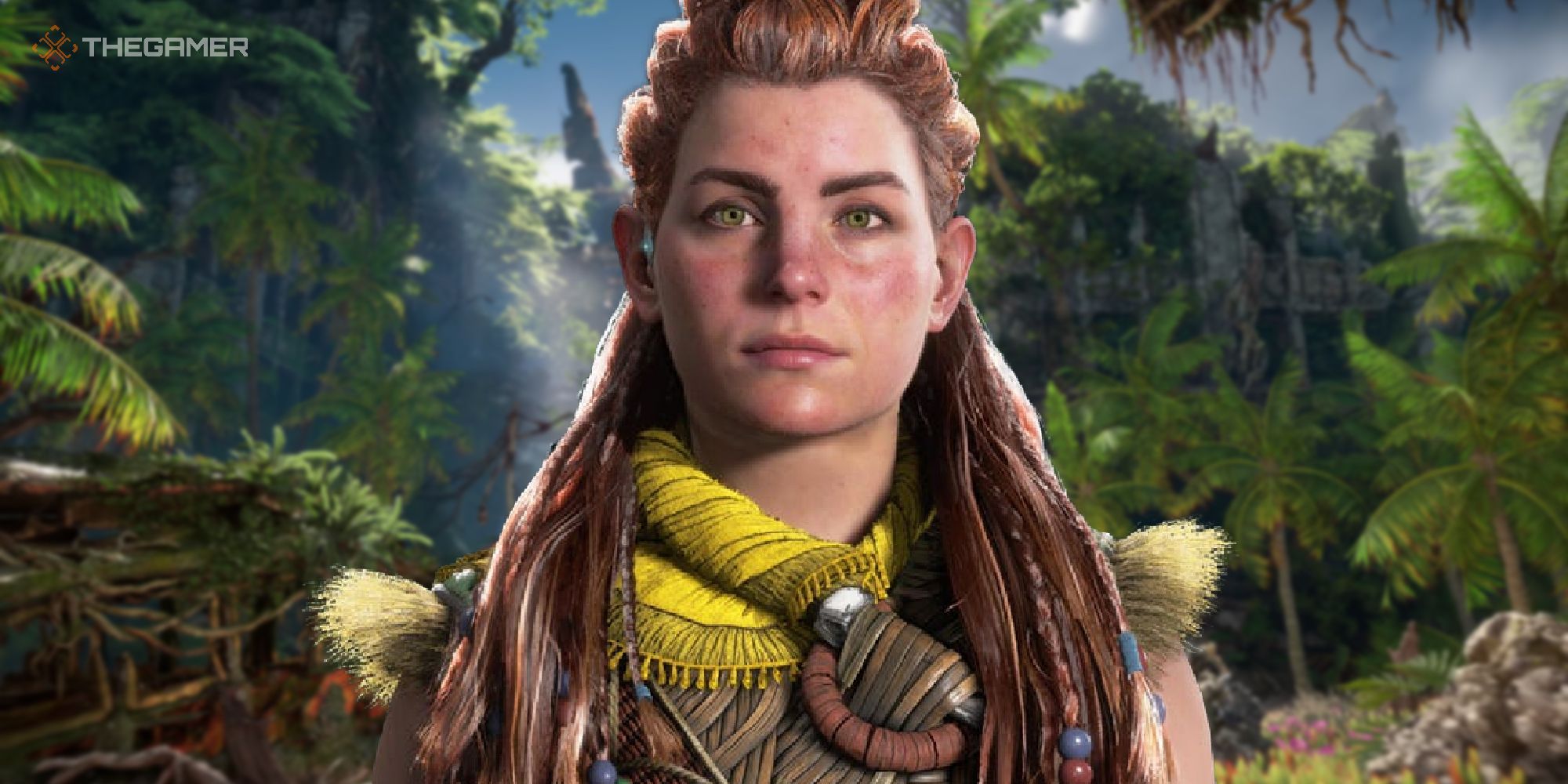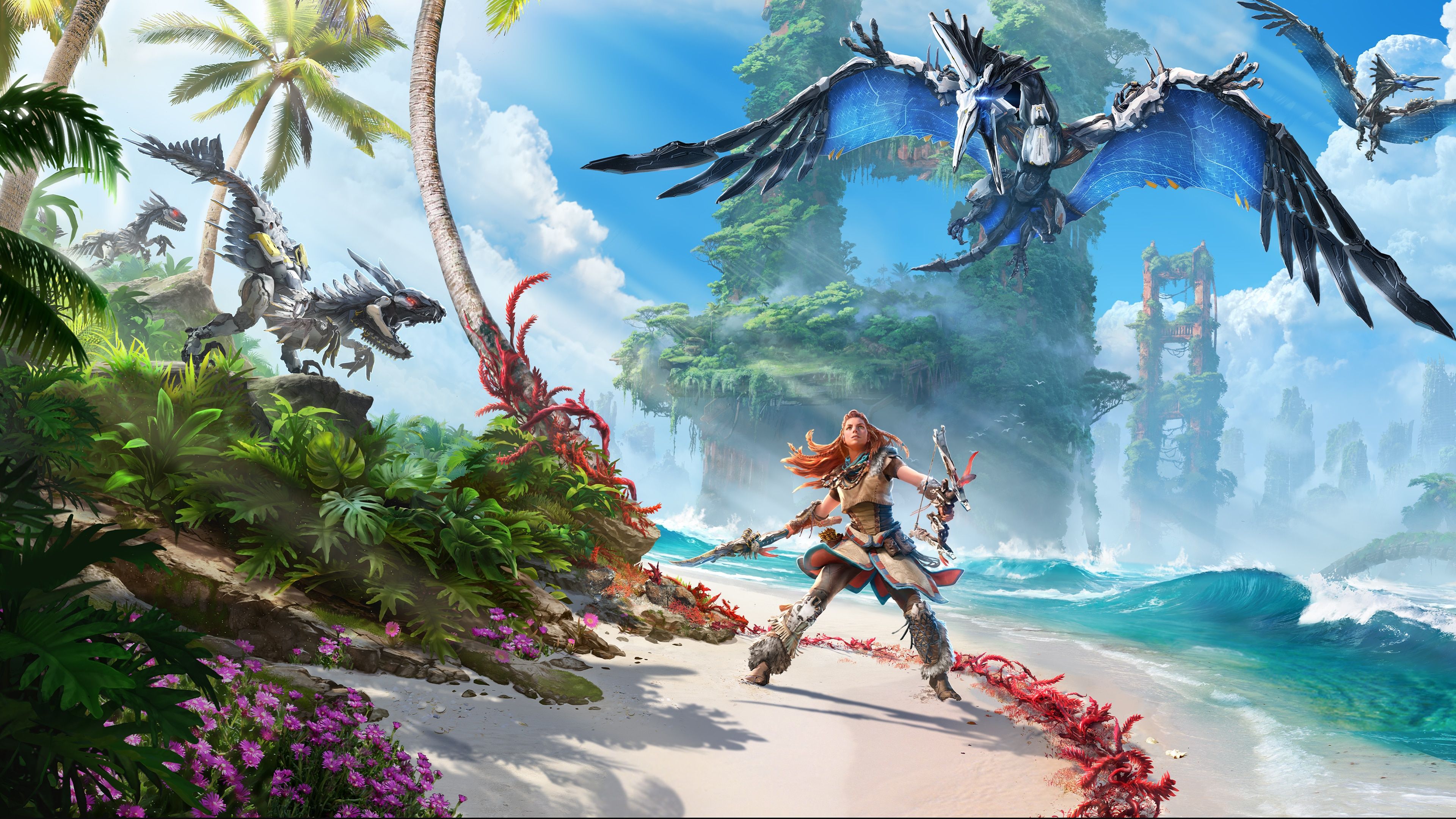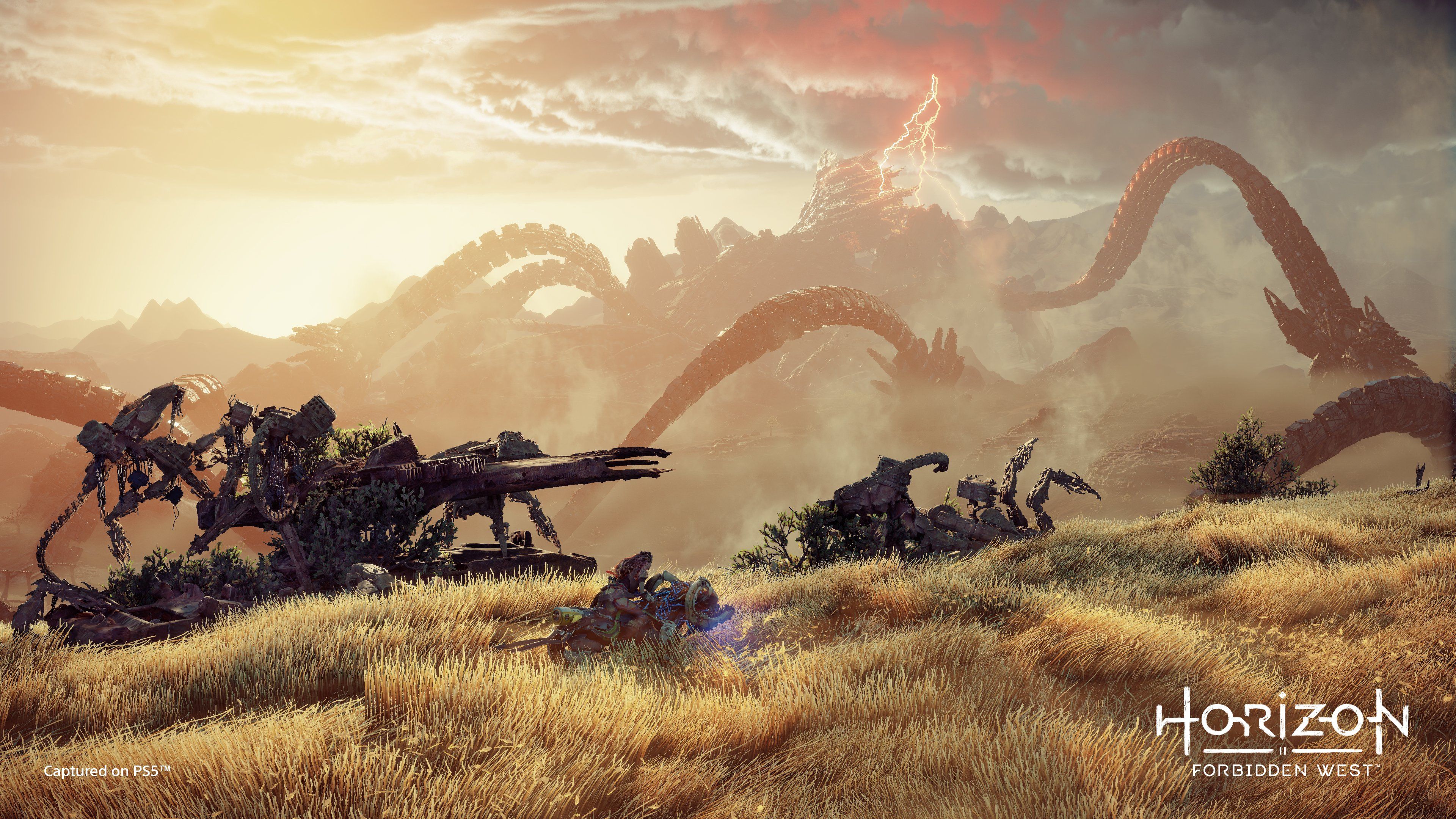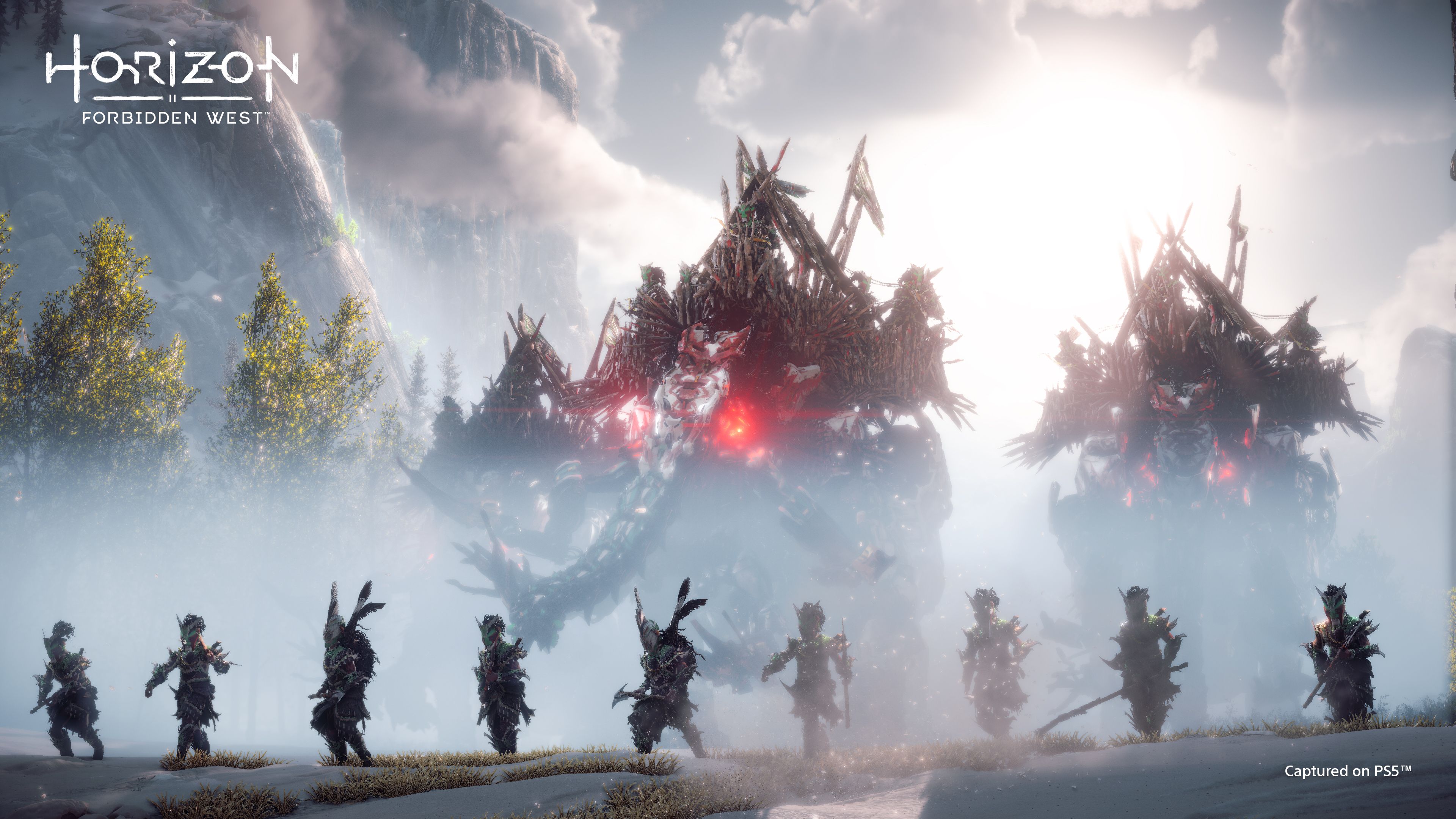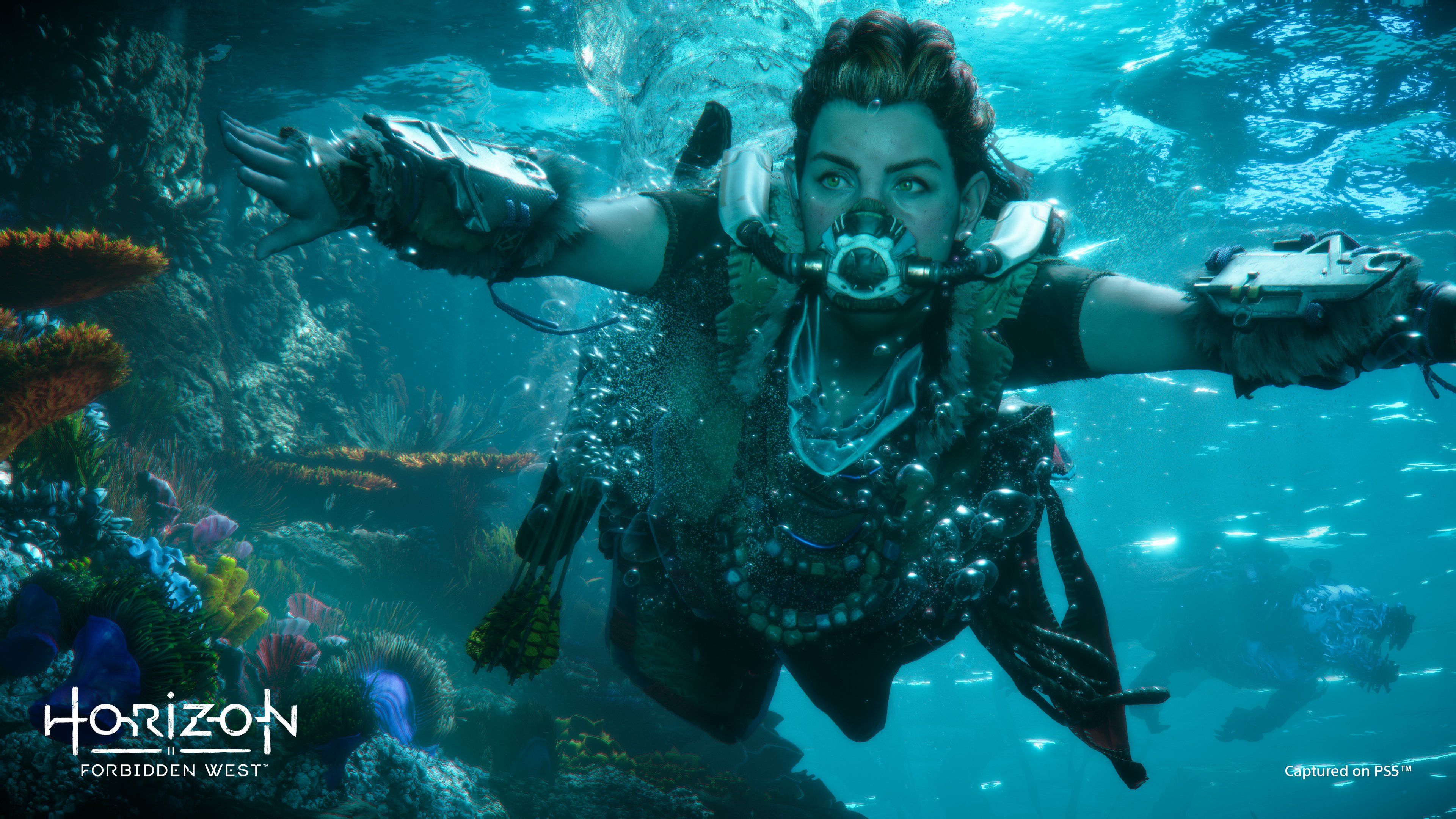Horizon Forbidden West has finally clicked. After bouncing off its predecessor several times and never finding space in my life for the second game, I’ve managed to sit down with it during a quiet spell and have found myself smitten. I finally see what all the fuss is about.
While Guerilla Games’ gorgeous sequel is fairly predictable in its approach to the open world genre, it has created a landmass so compelling that part of me is able to overlook that shortcoming just to lose myself in it all. Delving into Cauldrons, climbing Tallnecks, and slaying each and every robotic creature that dares cross my path is a predictable thrill, and one that is only occasionally held back by storytelling that doesn’t do enough to pull me in.
Aloy’s journey is one obsessed with saving the world. Our heroine is a capable one, often being christened as the only person in this entire universe capable of solving problems. Each and every town or camp she stumbles across is occupied by a random citizen asking her to slay some creatures or find their friend who has stranded themselves in a cave somewhere. Aloy is lovely and gracious so says she’ll get to it, putting her apparently urgent quest to save the world on hold in order to help some wasters with their trivial issues.
I suppose that’s the issue when open world games have a narrative that revolves around an urgent goal. The player is free to tackle quests in whatever order they like, or ignore them all together just to stop and smell the roses. Touching grass is encouraged, which is rare for gamers I’m sure. I’m taking my time with Forbidden West too, only ever tackling the main story when I feel fully ready to commit to how it will change the characters and land around me. Now I’m finally making progress, and the shortcomings surrounding its worldbuilding are becoming ever so clear.
Many critics more qualified than me have written about the problematic nature of Horizon’s depiction of tribal identities, taking inspiration from very real cultures and adapting them into a variable pastiche of civilizations scattered across its post-apocalyptic landscape. The Nora, Tenakh, Carja, Oseram, Banuk, and Utaru all possess distinctive outfits and customs informed by the world they’ve grown up in, many coming to worship the machine lifeforms as gods and taking their presence as gospel instead of growing to develop any form of personal agency. It’s jarring, and many of the NPCs you encounter walk around waiting for Aloy to acknowledge them instead of existing as part of the world. If you aren’t a robot dinosaur your place in Forbidden West feels largely inconsequential, and that’s a bit of a problem.
A lot of open world games suffer from this - most notably Sony’s own Days Gone and Ghost of Tsushima. It’s as if the protagonist is the only one capable of enacting any form of change or progress, gamifying the entire realm you exist within in a way that makes it hard to care. Horizon’s approach to tribal identity exacerbates this flaw because they only exist for cool aesthetic purposes. It’s as if concept artists Googled ‘cool tribal stuff’ and mocked up entire cultures from a few nifty armour pieces and outfits they thought looked rad. That’s a direct route to appropriation, and failing to realise the very real people and cultures these fictional ones are inspired by matter, and shouldn’t be trivialised for cheap entertainment.
Machines spawn from Cauldrons and similar ancient structures found across Horizon’s world, but for centuries nobody has ever thought to stumble into them or think about exactly how the planet they inhabit came to be. ‘The Old Ones’ is parlance for the humans that once occupied the crumbling city ruins, often worshipped as mighty gods who made it possible for the machines so many tribes worship to exist in the first place. You’re telling me that nobody was born in the past several years who suddenly wanted to know more, spurred onward by a natural curiosity to find out more instead of just settling into a routine and never once questioning their own existence. Aloy falls into a ruin as a child in the first game which had apparently never been discovered before, despite it sitting in a fairly obvious mountain roughly 100 metres from her house. It’s all a bit silly, and makes it feel like the whole affair exists in stasis until a chosen one comes along to get the juices flowing.
Tribes acknowledging generational traditions without question is a rather lazy way to make these identities stand out, as if having many of them spread across the game’s lore worship generic aspects of the environment and never seeking to expand upon that development. It’s also telling that the characters adopt the garb of Native Americans, but the relics of The Old Ones are frequently the symbols of the white middle class, with white collar employment, technological advances, or British china tea cups.
Aloy is fortunate in that she exists as a person who is in a position to question the ingrained tribal religions she stumbles across throughout the campaign, often having to shake them out of blind faith to see the real danger even if it means literally killing the machines they once saw as gods. Guerilla could have created myriad mythologies for these cultural identities instead of turning so many of them into glorified set dressing. You could argue that it’s just the game’s aesthetic, and it shouldn’t be compared to real life counterparts, but the inspiration is so obvious that not doing so would be irresponsible.
Now keep in mind that I fell off Horizon Zero Dawn and still have much left of Forbidden West to see, so there’s a solid chance the writing will surprise me and turn these tribes into bold justifications of the real world counterparts they take inspiration from. Editor-in-Chief Stacey Henley said in her review that this aspect of the game hasn’t gotten worse, but neither does it reconcile with its flaws and seek to build something better. It’s a shame, because a world like this is so bold and so beautiful, yet has almost nothing to say.

